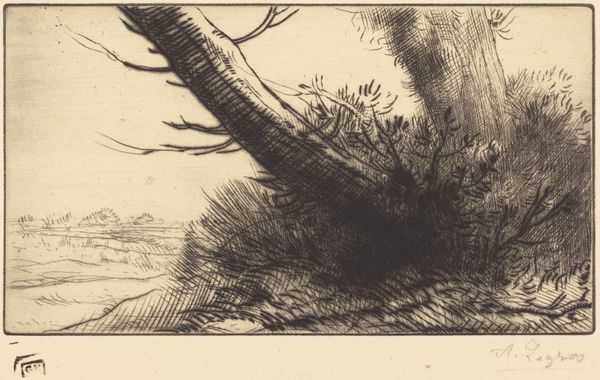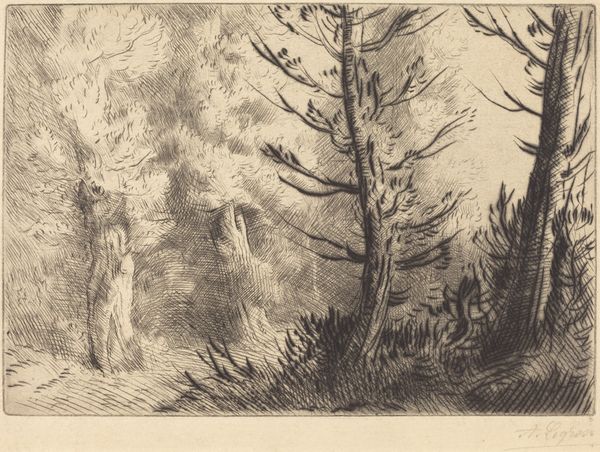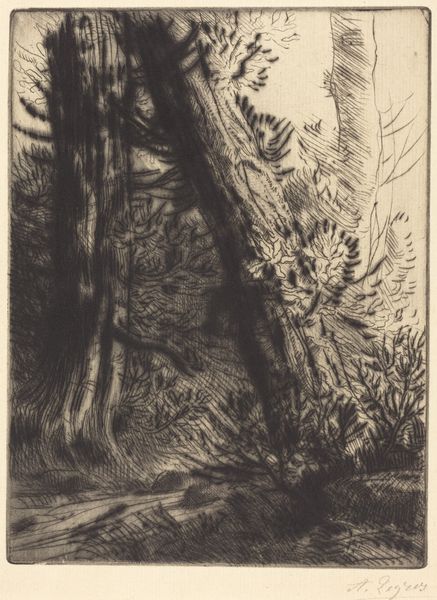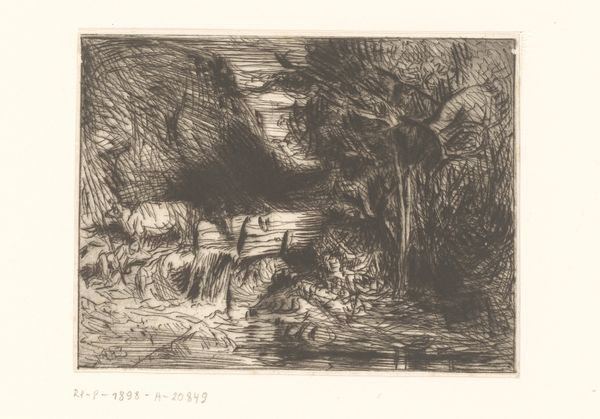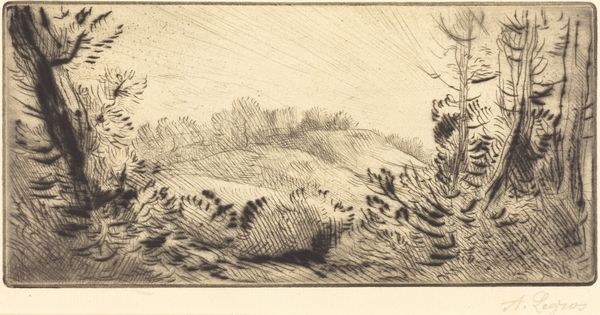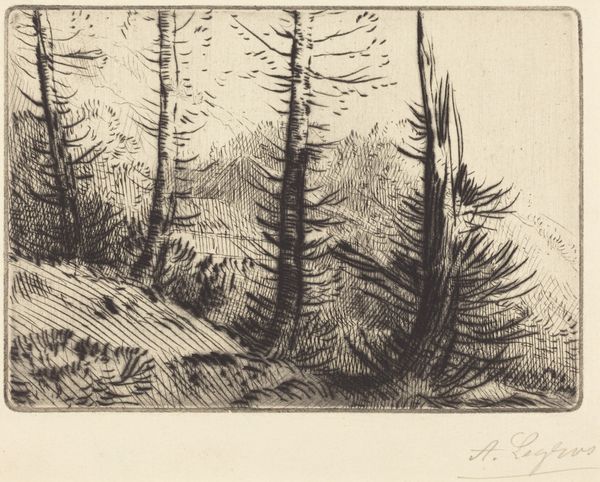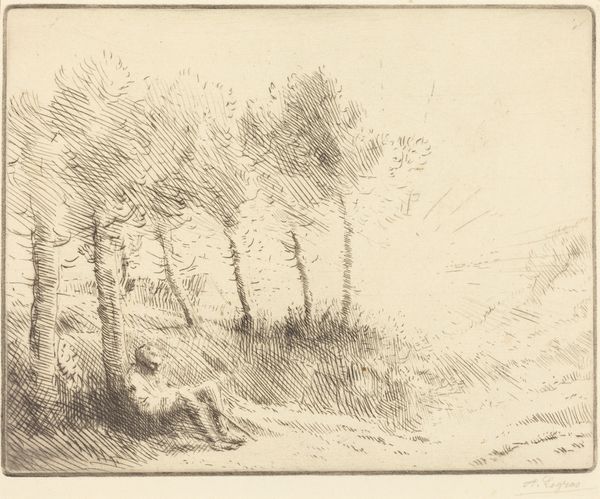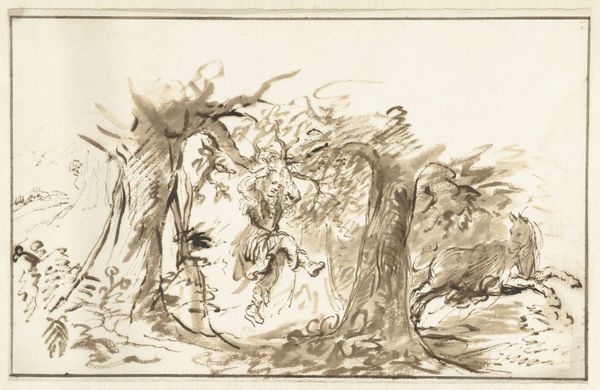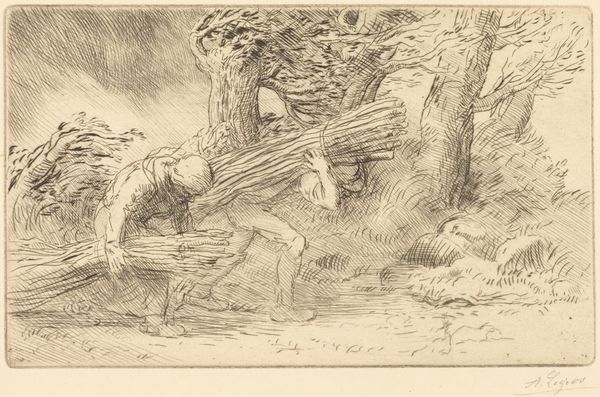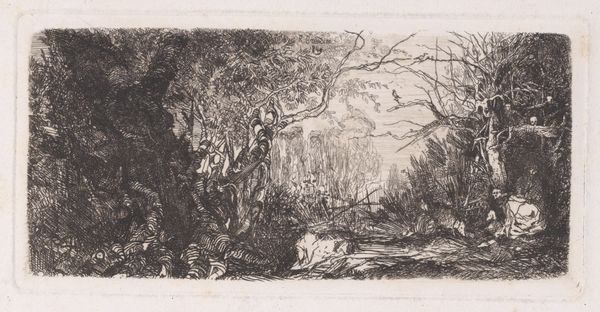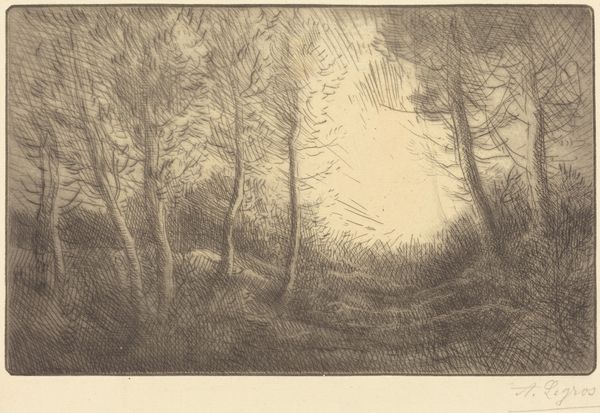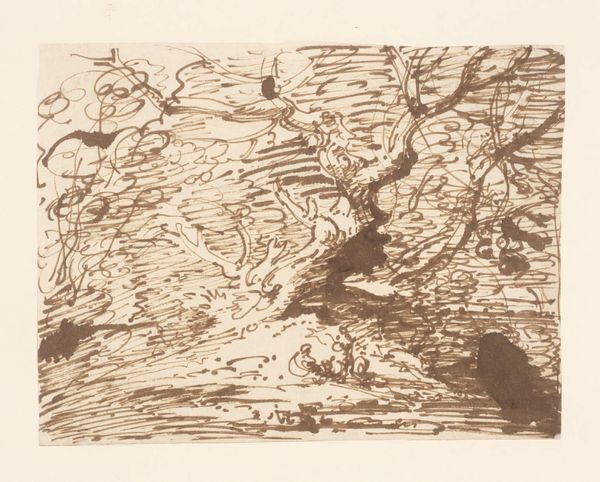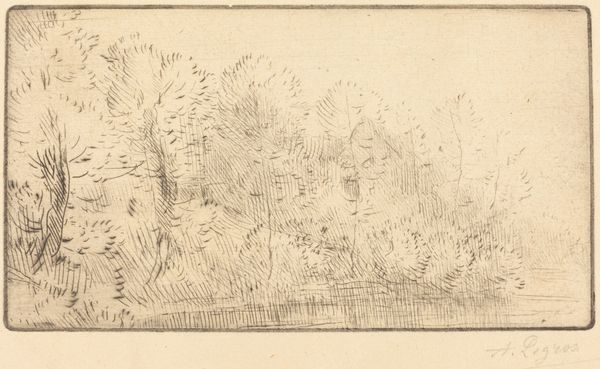
print, etching
# print
#
etching
#
landscape
#
realism
Copyright: National Gallery of Art: CC0 1.0
Editor: Alphonse Legros’ print, "Across Country", is rendered with such intricate lines. I find myself getting lost in the texture created by the etching. What draws your attention when you look at this piece? Curator: This image provides a window into 19th-century French artistic movements, specifically Realism and the burgeoning interest in landscape. Notice how the artist focuses on a commonplace scene – a dense thicket. This shift towards depicting the everyday reflects broader social changes of the time. The Industrial Revolution created a longing for nature, for simple rural scenes like this one. Editor: So, you're saying the subject matter itself is a commentary? Curator: Exactly. The rise of Realism was partly a reaction against the idealized depictions of academic art and history painting. Legros and others were interested in showing the world as it was, not as some grand narrative dictated it should be. But also consider the format – prints like this allowed for wider dissemination of these ideas. This made art more accessible to a growing middle class, influencing public taste and expectations of art’s purpose. How does this influence your perception of the piece now? Editor: I see it less as just a pretty landscape and more as a statement about what is deemed worthy of artistic attention. Also, knowing it could be widely distributed makes me consider the potential influence of artworks on the larger population. It also feels more revolutionary. I'd originally dismissed prints as easily made, but that aspect is precisely why it matters in terms of influence on culture. Curator: Precisely. Considering art within a historical framework often unveils layers of meaning we might otherwise overlook.
Comments
No comments
Be the first to comment and join the conversation on the ultimate creative platform.
